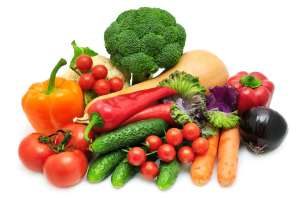The basics of performance diet for endurance has changed little over the years. A diet consisting of 60-65% carbohydrate, 20-25% fats, and 15-20% protein is the proper ratio of macro nutrients for most endurance athletes. A highly trained endurance athlete would not last very long on a high protein diet, because their glycogen stores would quickly become depleted and they would no longer have the energy reserves to train effectively. There is little controversy in athletic nutrition when compared to differences in opinions elsewhere. How to fuel our bodies for endurance hasn’t changed much over the years, and is fairly easy to understand.
Macronutrients
Every diet should normally contain fats, proteins and carbohydrates. Get these macro nutrients from quality sources, and as a basic protocol, divide your daily calories into 60% from carbohydrates, 20% from healthy fat, and 20% from delicious protein.
Carbohydrate
As a critical macronutrient in the athletic diet, carbohydrates are the cornerstone, amounting to 60% (plus or minus) of daily calories. Carbohydrates are measured according to how fast they hit the blood stream. Some carbs release into the blood more quickly than others. Those that release quickly are termed, simple. Those that release more slowly, are termed complex. Complex carbohydrates include whole-grains and vegetables. Broccoli, carrots and cauliflower are examples of complex carbs since these are digested slowly and release energy over a longer time. This is good for endurance athletes.
Simple carbs are breads, pasta, cereals, some veggies, rice and other grains. A potato is considered simple, or maybe less complex.The point is there is a measurement of how fast what you eat enters the blood stream. That measurement is the Glycemic Index.
Good carbs
Athletes gravitate to carbohydrates that are unprocessed, such as whole grains. Higher fiber content is found in some carbs, and higher nutrients, too. Good carbs tend to release more slowly into the blood stream. This is what makes some carbs better for dinner the night before the big day. But simple can be good too. Runners and walkers use more simpler carbs as they get closer to the race start. They use the simplest of carbs for the race.
Processed carbohydrate foods such as pasta and bagels are great for loading your body with energy before and after competition. Simple sugars are good during a competition and for quick energy replacement afterwards (sports drinks). Athletes should try to avoid fruits before competition. Some fruits can upset the stomach and the type of sugar found in fruits, fructose, can be harder for the body to process during exercise. Carbohydrates are broken down and stored as glycogen; the bodies fuel source, or converted to energy to compete and train. When glycogen stores run out an athlete may “bonk” or “hit the wall.” An athlete will feel lousy, lethargic, and slow. In this scenario, the body begins breaking down your muscles to use as fuel. Several days of hard training can also deplete glycogen stores. This sluggishness and inability to train hard is often misdiagnosed as over training. A good post workout recovery plan is crucial to maintaining glycogen stores for repeated training and competition. A good post work out recovery meal should consist of eating carbohydrates and a little bit of protein (4:1 ratio), immediately after training.
Fat
Fat is another great fuel source used for endurance. Long distance endurance relies on energy from fat. The “fat burning zone” is a good zone to be in until your ready to drop the hammer on the finish line. If you run too fast, your primary energy source is from blood sugar (carbs). If you run slow and easy, your body can tap into the fat stores. When this happens, you have enough fat in your stores to go a longer distance. You’ll be burning fat in the flame of carbohydrate instead of running fast and burning all your limited blood sugar.
As the intensity of exercise increases, carbohydrate becomes the main fuel source. People wanting to lose weight should go slower, longer, by burning fat in the fat burning zone.
Fat is not a good source of energy to consume during exercise, but is crucial to processing certain vitamins and performing body functions. The good fats are are mono or poly-unsaturated fats. A good way to identify these types of fats is that they are liquid at room temperature (oils), or generally come from plant sources. Avocados and nuts are whole foods with this type of good fat. Good fat can also be found in canola, olive, and safflower oil. Saturated fats generally come from animal sources and include cheese, butter, meat fats, and Moose Tracks Ice Cream. The body only needs a small amount of saturated fats, maybe 10% of the fat consumed.
Protein
Protein is a poor source of energy and requires a lot of work to break down. Protein only supplies about 5% of the energy used during exercise, and up to 10% when glycogen stores are depleted. Protein however is crucial in the diet to repair muscles. Endurance athletes should be aware that increased protein intake does not necessary equal increased muscle mass. Muscle gain comes from adaptation to stress placed on muscles. Nutrition and protein help recovery. Consuming too much protein can be hard on your kidneys and is unnecessary. The body can only process so much protein and the rest is flushed.

